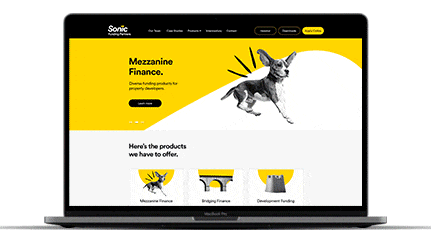Responsive Website Design Services to Improve Your Business
Responsive Website Design Services to Improve Your Business
Blog Article
Leading Tips for Developing an Impactful Internet Site Style That Converts
To achieve this, one should take into consideration a selection of elements, including recognizing the target audience, prioritizing customer experience, and maximizing for mobile platforms. The calculated usage of compelling call-to-actions and a well-defined aesthetic pecking order plays a crucial duty in leading individuals through their trip.

Understand Your Target Target Market
Comprehending your target market is essential to efficient website layout, as it lays the groundwork for developing an engaging individual experience. Determining who your customers are, including their demographics, choices, and actions, allows developers to tailor the site's content, design, and functionality to fulfill specific needs.
Performing complete marketing research is vital in this process. Studies, meetings, and analytics can give valuable insights into individual assumptions and discomfort points. By compiling this information, developers can create customer identities that represent various sections of the target market, guaranteeing that style choices are notified and pertinent.
Additionally, recognizing the target market helps in choosing appropriate layout components such as color plans, typography, and images that resonate with individuals. An internet site that speaks straight to its target market fosters a feeling of link and trust, urging longer check outs and greater conversion prices.
Ultimately, a user-centered strategy to internet site design not only improves user fulfillment yet additionally sustains company objectives by driving interaction and commitment. By focusing on the demands and preferences of the target audience, a web site can properly serve its objective and achieve preferred results.
Prioritize Customer Experience
To improve the general efficiency of a web site, focusing on user experience (UX) is essential (Website Design). A well-designed UX ensures that visitors can browse the site effortlessly, find info promptly, and engage with content meaningfully. This leads to increased user complete satisfaction and higher conversion prices
Begin by applying intuitive navigating. Menus ought to be realistically structured, enabling individuals to locate vital areas of the site with very little effort. Consistency in design elements, such as color design and fonts, promotes knowledge, which is vital for maintaining customer involvement.
Furthermore, take into consideration the loading rate of your site. A hold-up of just a few secs can bring about considerable drop-offs, as individuals are less most likely to wait for a slow-loading web page. Enhancing images and maximizing code can enhance performance and retain site visitors.
By focusing on user experience, you not just create a more delightful atmosphere for site visitors but additionally enhance your brand's integrity. Inevitably, a focus on UX is an investment in the lasting success of your website.
Optimize for Mobile Gadgets
Optimizing for smart phones is essential in today's digital landscape, where an increasing variety of users gain access to web sites with smartphones and tablet computers. A mobile-friendly layout not just boosts user experience however likewise plays a considerable role in enhancing internet search engine positions. To accomplish this, it is important to adopt a responsive layout that automatically adjusts to numerous display sizes and alignments.

Loading speed is an additional important aspect; mobile customers are commonly less patient and anticipate fast accessibility to details. Enhance photos and take advantage of internet browser caching to enhance efficiency. Lastly, test your web site on numerous devices and display resolutions to identify and fix any browse around this web-site type of potential functionality issues. By focusing on mobile optimization, you make sure that your website stays affordable and efficiently involves a broader audience.
Usage Engaging Call-to-Actions
A site's effectiveness typically rests on its capability to lead site visitors toward desired actions, making compelling call-to-actions (CTAs) vital components of style. CTAs function as the pivotal points that guide individuals to involve with the website, whether that means buying, enrolling in a newsletter, or downloading and install this website a resource.
To create effective CTAs, clarity is extremely important. Usage concise language that plainly connects the activity you want the user to take.
In addition, think about using directional hints, such as arrows or images, to assist users towards these switches. By concentrating on these components, organizations can substantially improve user involvement, driving conversions and ultimately attaining their site's objectives.
Emphasis on Visual Pecking Order
Reliable website layout depends greatly on a well-structured visual pecking order that overviews users via material flawlessly. By organizing aspects in a manner that focuses on details, designers can improve individual experience and help with decision-making. This entails utilizing size, shade, comparison, and spacing purposefully to accentuate the most crucial components of a webpage.
Making use of bigger typefaces for headings and subheadings establishes a clear difference in between different sections, permitting individuals to scan material easily. Additionally, employing different shades for buttons and calls-to-action can capture individual focus and urge interaction. Whitespace is one more crucial element; it avoids mess and makes it possible for customers to concentrate on key messages without diversions.
Photos and graphics should complement the text while likewise sticking to the established hierarchy, reinforcing the overall message (Website Design). Consistency in design elements, image source such as color design and typography, further strengthens the aesthetic pecking order, making navigating user-friendly

Verdict
In verdict, efficient website design necessitates a comprehensive understanding of the target audience, prioritization of customer experience, and mobile optimization. Ultimately, a well-executed site design offers as a vital part in driving individual activities and attaining organization goals.
Report this page